If you’ve just purchased your new home, you already know that the upkeep and maintenance of that home are crucial if you want to enjoy your house and keep it both functional and attractive for many years to come.
But if you’re new to homeownership, what does this mean in practical terms? Just how do you get started devising a list of things you have to do to take the best care of your new home? After all, you’re likely going to be hard-pressed to find an “official” new homeowners’ maintenance guide to help you, but that doesn’t necessarily mean you have to figure all of this out on your own.
Getting Started with Your Homeowners Maintenance Checklist
As a homeowner, you will never again have a short to-do list, but this doesn’t mean that all of those tasks are going to take a long time to complete.
In fact, most of the chores you’ll need to perform to make sure your home is functional and comfortable take a very short amount of time to do, so you don’t have to dread taking a look at your to-do list.
Both the exterior and the interior of your home will need regular maintenance, but if you break your list down into specific tasks or particular areas of your home, it can make everything much easier on you.
Below are some tasks that are not only necessary for your home to look good, but they are imperative if you want your home to be in good condition so that you can keep it a long time.
Cosmetic chores are one thing, but these tasks help you keep your home in top-notch condition and can save you a lot of time and money in the process.
The simple truth is, basic maintenance chores will save you a lot of money because they allow you to notice problem areas, and repair those areas before they become too costly and too complicated to fix properly.
Here is a list of the essential new homeowners maintenance guide tasks that you’ll need for your new home.
Table of Contents
1. Service And Check Your Boiler
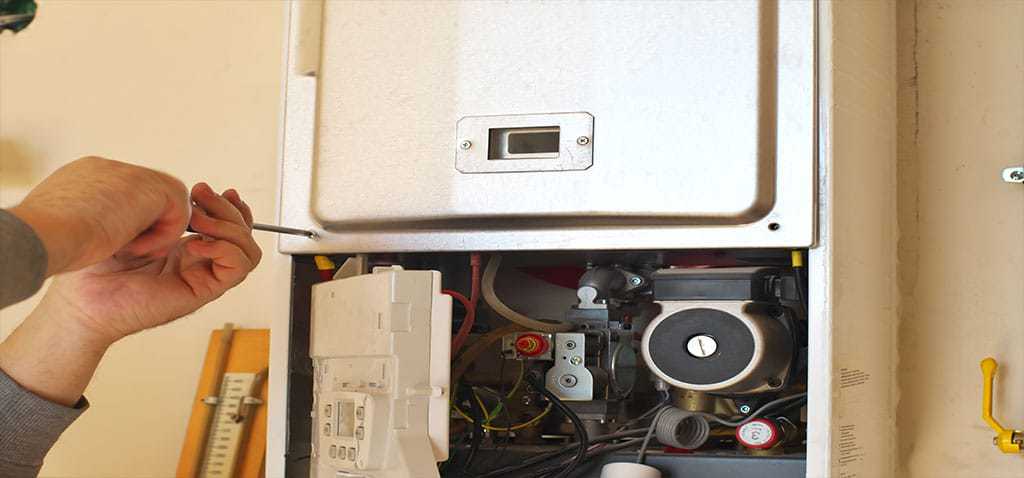
Each year, preferably in the autumn, you’ll need to get your boiler serviced and checked by a professional and qualified gas-safe registered engineer.
If this isn’t done correctly, not only will your energy bill suffer and cost you a lot more, but it also dramatically increases the chances that dangerous carbon monoxide could be emitted into the air.
The good news about this household task is that you don’t have to do anything about it yourself because it requires you to call in the experts and let them take it from there.
Indeed, inspecting and cleaning your boiler is a job for professionals, and they have the right tools, equipment, and expertise to do the job right the first time.
If you don’t know who to call, you can contact the company that installed the boiler, and they should be able to make some suggestions, and if they are unable to service your boiler for you, they could be able to help you find someone to do the job.
Just make sure the person is a licensed heating, gas safe registered professional so that the job is done correctly.
Yearly attention to your boiler helps your home – especially your heating system – run more efficiently, but it does much more than this.
It also ensures your home is safe, saves you a lot of money on your utility bill, and makes sure your boiler lasts a whole lot longer. This job might cost you a little bit of money and indeed some of your time, but in the end, it provides you with something that’s invaluable – the peace of mind you only get from knowing you’re taking excellent care of your home.
2. Check Your Heating And Radiators

When it comes to checking your heating and radiators the best way is to turn on the heating and turn up your thermostat to get the radiator nice a hot.
If you have cold radiators at the top, then you can go around all the rooms in your home a bleed the radiators to make sure they are nice a hot all the way to the top.
Suppose you have thermostat radiator valves that are not working. In that case, you can quickly fix them by removing the head and pulling up the pin on the valve body for more information on how to fix one radiator not working I have a guide for you on that.
Doing it yourself can save you money; however, if you are not comfortable doing it, then you can call a professional person to do it for you.
3. Check Your Chimney And Fireplace
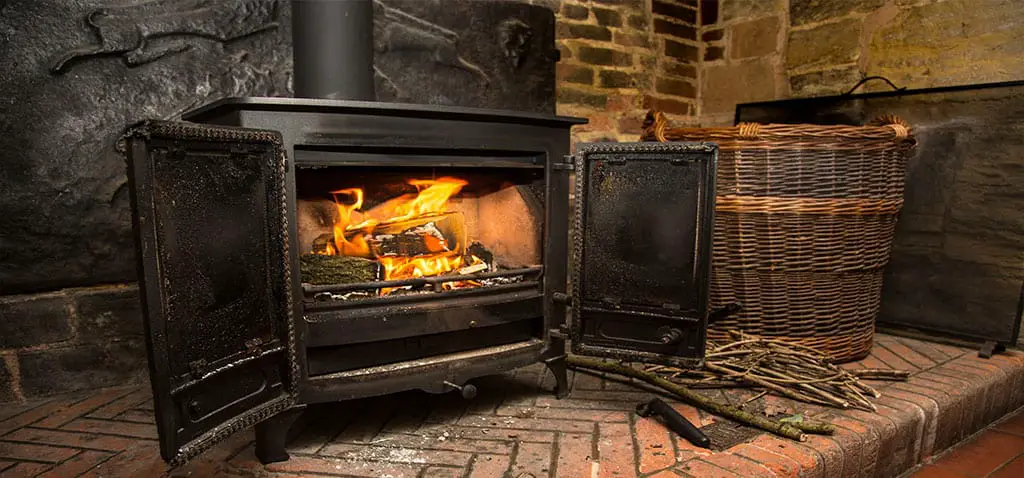
If you have a wood-burning fireplace, this is going to be one of your most important household chores, and it should be completed every autumn before the fireplace is needed.
This is one task that you’ll need to contact a professional to get it done correctly.
When you use your fireplace month after month, year after year, creosote can build up on the inside of it. Creosote is a by-product of burning wood, and it is extremely flammable. Not only does this by-product create a dangerous fire hazard, but it also dramatically increases the odds that dangerous carbon monoxide could creep into your home.
Not only do you need your fireplace checked for creosote, but these experts will also clean the chimney so that all of this dangerous by-product is removed.
It is not only a messy job but one that needs to be done correctly so that nothing dangerous is left behind to cause your family to be in danger.
Who do you contact to get this job done? A good chimney sweep with the expertise and knowledge to get the job done quickly but efficiently.
Fortunately, these professionals are easy to find, and their services are even guaranteed.
When you call in a professional chimney sweep every autumn, it adds to your sense of security because you’ll know for sure that you won’t have to worry about your chimney or your wood-burning fireplace causing a dangerous fire that could be fatal to you or your family.
A good old-fashioned wood-burning fireplace is an excellent addition to anyone’s home and can add a lot of ambience to your living room. Still, it also comes with responsibilities that you have to take seriously.
The best part is that this service is fast and inexpensive, and it only has to be done once a year, which means for the vast majority of the year, you won’t have to bother with it.
4. Make Sure Your Gutters Are Clean
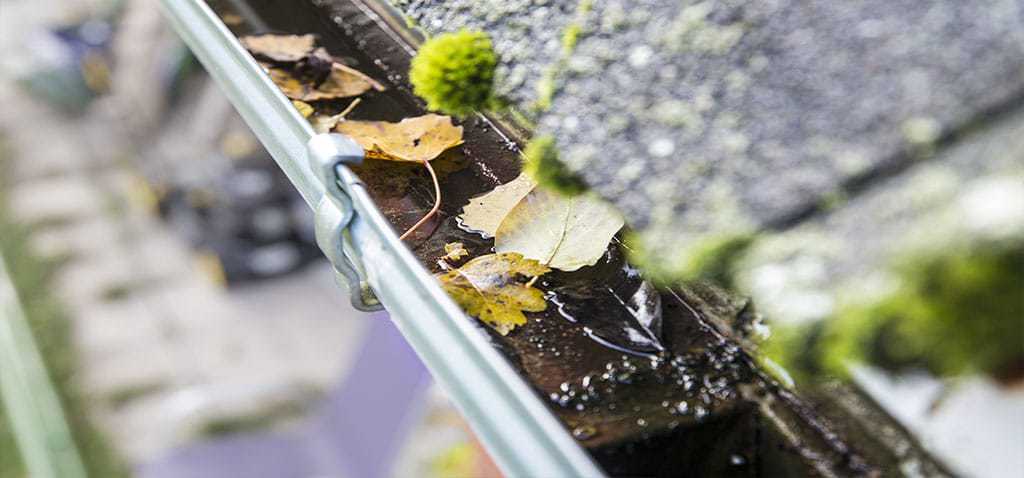
Ah, the dreaded gutter-cleaning job that no one seems to want to do.
Not to worry, though, because this does not have to be a DIY job if you don’t want it to be. When your gutters are filled with leaves and other debris, a lot of things can happen.
One of the worst things is that water could build up inside the gutters and eventually seep through to the inside of your home via the roof, foundation, basement, or even the crawl space if you have one.
In addition, if you don’t know the water is there, it could even freeze inside your gutters and make them unworkable, which means you’ll have to buy new ones.
If you decide to do this job yourself, then yes – it is going to take a bit of work on your part.
When you get up on your ladder and start digging around in your gutters you should wear gloves to make the job a little easier, and use either your hands or a tool to remove all of the debris.
When you’re done removing all the muck from your gutter, take your garden hose and run some water through the entire length of the gutters so that you can eliminate any debris that you missed previously.
This will also help you notice any hidden clogs that you may need to go back and work on before removing them with more water.
While you’re flushing out the gutters with water, it’ll give you the chance to determine if there are any holes or leaks anywhere, which of course you can go ahead and repair at that time.
You’ll also be able to notice any defects in the gutters, such as rust stains or places where the gutters might be bent or cracked. While you’re checking the gutters, go ahead and inspect the area around the gutters, including the fascia, soffits, roof, and even any nearby siding to make sure they are all in excellent condition as well. These gutter checks will ascertain the actual condition of the gutters and help take care of problems before they get any worse. You should check the gutters once a year in the fall, but if you live in a secluded or wooded area, it’s best if you check them twice a year and not just in the fall.
5. Caulking For Your Windows

The caulking placed around your windows goes a long way to help keep air from leaking through the windows and causing your home to be too cold in the winter, which means that your heating system isn’t able to run efficiently and keep you comfortable, increasing your utility bill in the process.
Many experts claim that up to 80% of the heat loss that occurs during the winter months is due to various cracks in your home, and this includes the spaces in between your windows and the frames.
Even if all your windows are properly caulked, go ahead and re-caulk them as soon as you move into a new home.
Afterwards, always check the caulking at the end of every summer to make sure there are no cracks or disruptions to the caulking that’s already there.
Make the repairs that are needed, and most importantly, make certain you abide by the instructions printed on the product packaging so that you complete the task successfully.
One of the things you’ll need to look at is the joint movement capability, which will help ensure you get a great seal that is without peeling and cracking.
Most people recommend a joint movement capability of between 25% and 50%, but if the number on the packaging is different, always go by that number instead.
When you start the caulking process, make sure the area you’re caulking is thoroughly clean and dry, and try to start this project once temperatures start to level out some, which usually means the afternoon hours.
It also helps if you familiarise yourself with the different types of caulking products out there, because there are many of them. Caulking itself is not a complicated process, especially if you take it slow and steady and don’t rush through it.
Once you’ve done it once, in fact, any future caulking jobs should be a lot easier on you.
You would use chalk inside your home and silicone outside your home; this is because chalk is not waterproof and can be painted whereas silicone seal is waterproof but cannot be painted.
6. Check Your Exterior Paint
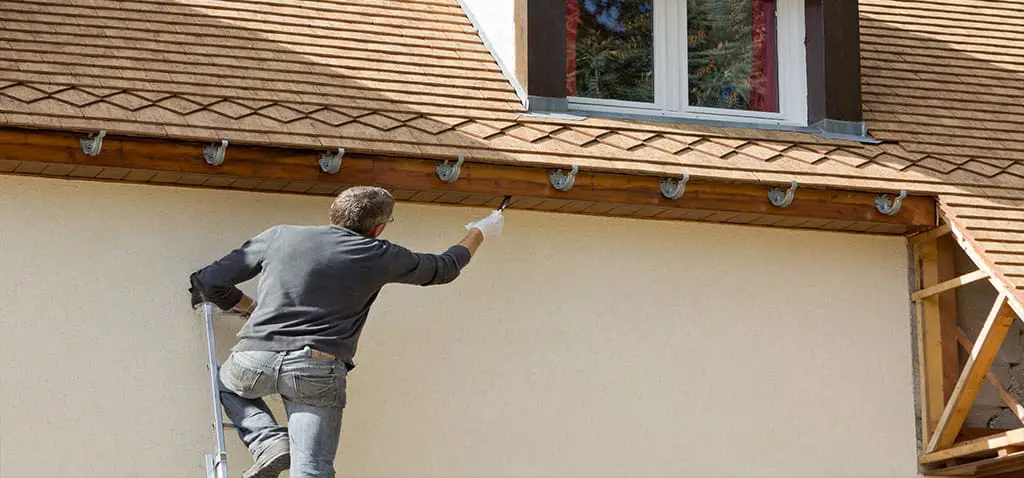
The exterior of your home takes a lot of abuse because none of the elements is very kind to it, especially when it comes to the exterior paint that you’ve used to keep the home looking good.
Each season offers its own challenges to your home’s exterior, and one of the many maintenance tasks you need to keep up with is to check the condition of the paint on the outside of your home to make sure it doesn’t need any touch-ups or even a completely new coat of paint everywhere.
If your exterior paint is in good condition, this means if you have wood panelling, it will not rot. This is because exterior paint is not just applied for the house to look good – it is also a protective coating, so to speak, helping certain parts of your home look better and last longer.
Each summer, you should inspect your entire outdoor area, get up on a ladder if you need to, and check for any chipping, peeling, or cracking in any part of the paint. If you need a touch-up, go ahead and take care of that as soon as possible.
Of course, you may find out that the entire exterior needs a new paint job, which is likely to involve sanding, scraping, and priming, but the good news is that once you do this, you likely won’t need another complete paint job for 10 years or more, depending on the paint you use.
Touch-ups, however, go a long way in making sure the siding and the rest of your house are protected from the elements so that no permanent damages result from anything the weather or the temperatures throw at you.
While we’re on the subject, make sure you use the right paint, even if all you need are touch-ups, so that you get excellent results in the end.
7. Make Sure Your Deck Is Not Holding in Any Moisture
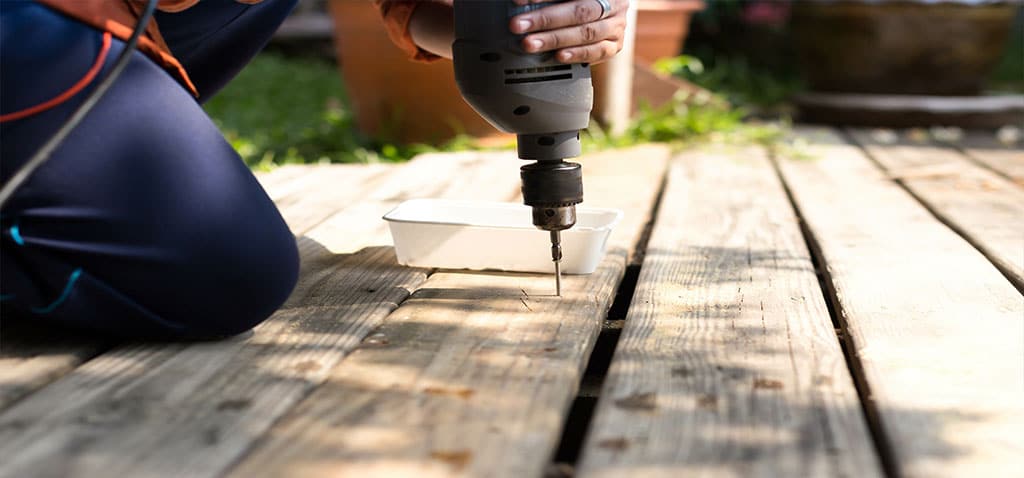
Wooden decking is a great structure to have in your garden, and even though you don’t necessarily have to spend a ton of time on it to keep it looking good, it is not precisely maintenance-free, either.
At the beginning of every summer, go ahead and perform a “splash test” on your deck. This is the best way to test the last seal that was put on the deck to see if it’s still working. To do this, just splash some water on the deck – it doesn’t have to be a lot of water – and check to see if the water beads up like it’s supposed to.
If it doesn’t bead up, this is a sign that the deck needs an additional coat of sealer such as Cuprinol decking stain.
In fact, as a general rule, you should plan to reseal your deck every two to three years, although some sealers may last much longer than that.
All wood decks, including those made out of redwood or which are pressure-treated, should be sealed and stained regularly because this is the only way to make sure that water is not getting deep inside of the wood.
If it does, extensive water damage and even rotting of the wood could occur, rendering your deck useless.
To choose the right sealer and stain, make sure you know what type of wood was used to make the deck because different products work differently with the wood that was used.
If you aren’t sure how much water to spill on the deck when you’re testing it, just fill up a glass with water and dump that onto the deck.
This amount of water is more than enough to conduct the “splash test” so that you can determine what to do next.
Getting many years of enjoyment out of your deck means properly taking care of it, and you’ll have to check the condition of the sealer once a year to make sure it is still doing its job.
8. Attention To Your Crawl Space Or Basement
If your home has a crawl space or a basement, you simply can’t ignore it.
One of the things you have to look for in your crawl space or basement is any water that happens to be there.
This water can cause mould and water damage to your home, and the sooner you notice any water that’s there, the sooner you can take care of it.
What is the easiest way to do this? Get out your trusty flashlight and thoroughly inspect the entire crawl space or basement, making sure you’re on your hands and knees and that you don’t forget any corner, crack, or crevice that’s there.
Use your hand to check some of those areas if you’re unsure if there’s water there, but most importantly, if you do notice any water – even a small amount – you’ll need to call a home inspector so that he or she can tell you what you need to do next.
When you’re checking for water, you should also check for dampness and even any colour changes that might have appeared since your last inspection.
In fact, if anything you see or feel causes you any concern, you’d be wise to go ahead and call a home inspection specialist.
The key is to check every speck of the crawl space or basement, so you don’t miss anything.
If you have a large crawl space or basement, the process might take some time, but it’s worth it, in the end, to keep your home safe from mould and water damage.
A home inspector will first determine where the water is coming from, and this is the first step to getting rid of that water so that your home is safe and sound.
Again, this is one of those tasks that you can consider a preventative measure because it saves you both time and money in the long run.
To keep up with this task, make sure you inspect your crawl space or basement every autumn before the first rain because you’ll want to make sure it is in good enough shape to handle the rain that is coming.
9. Tasks You Should Do Monthly
While most of the tasks on this list are tasks you can do once or twice a year, others should be completed once a month, and they include the following:
- Check your water softener and replenish the salt if necessary.
- Clean your garbage disposal: grind ice cubes through it, then flush everything down with hot water and a bit of baking soda.
- Inspect all of your taps and showerheads to make sure there are no mineral deposits that need to be removed.
- Inspect all of your baths, shower trays, and sink drains to make sure they aren’t clogged; if they are, use a drain cleaner to unclog them.
- Inspect all your fill valves in your toilets and your cold water storage tanks and replace them if you need to – replace a toilet fill valve yourself I have a guide for you for that
- Inspect your electrical cords to make sure none of them is frayed or damaged in any way.
- Test your smoke and carbon monoxide detectors, fire extinguishers, and if applicable.
These are simple, fast jobs that won’t take you long to do, but they can go a long way in making your life as a homeowner a lot easier and a lot less stressful.
While you’re at these tasks, there are also a few things you’ll need to know how to do to keep an eye on everything and make sure your home is working correctly year after year. If you don’t know how to do the following tasks, make sure you learn how to do them as soon as possible:
- Caulk your windows and other fixtures.
- Fix a running toilet by changing the flush valve.
- Maintain all of your appliances.
- Shut off the main water line.
- Turn off power to different parts of the house.
- Turn off the main gas line.
If something goes wrong with anything in your home, you’ll naturally want to try and fix it yourself if at all possible, both to save you some money and because as a homeowner, it’s just a good idea to know how to do these things.
For this reason, it’s a good idea to know how to fix a toilet or fix a dripping tap, Yes, it saves you both money and time, but it also gives you a sense of pride that you can do things yourself that a lot of other people can’t.
10. Miscellaneous Tasks
There are tasks you do as a homeowner that make being a homeowner a lot easier, and there are tasks you do to provide you with great peace of mind. There are also tasks you can do yourself and tasks that require a professional. Let’s take a look at some of these tasks.
- Tasks are done to provide you with peace of mind: purchasing a home warranty and purchasing discount programs, such as Corgi home plan. With their complete package that will cover your home’s heating, plumbing, electrics, drains and boilers they require the experts to come to your home each year and check your boiler to make sure it is working correctly.
- Tasks you can do yourself: these include replacing batteries in your smoke alarms and carbon monoxide detectors, checking the refrigerator for any leaks when you see water somewhere inside of it, inspecting your sidewalks and driveway, cleaning and power-wash your siding, checking all toilets for leaks, check your shower pumps, check the filters in your extractor hood in your kitchen, and go up on the roof and check it thoroughly to make sure it is clean and in good condition.
- Tasks you should leave to the professionals: these include electrical glitches, erratic power coming from an electrical outlet, or any burning or fire-like smells coming from any electrical outlet or appliance.
With tasks such as mowing the lawn, cleaning out your fireplace, and many others, you can decide for yourself whether or not to hire a professional (or even a young person in need of some extra income).
Much of this depends on your budget.
Lots of people hate keeping their gardens nice and well-kept, so they pay someone to do it for them. If you’re trying to save money, however, it’s better to try and do the job yourself.
With any task that involves your electrical or plumbing system, you should always call a professional.
Tinkering with either of these systems when you don’t know what you’re doing can be downright dangerous, and even though electricians and plumbers can be expensive, they won’t be nearly as expensive as trying to do the job yourself and only making it worse in the end.
Know your limits, and only perform the tasks that you are positive you are capable of handling.
Many homeowners choose to group these tasks by season so that they are performing specific tasks in certain seasons.
This way, you can spread out the tasks throughout the year, and you won’t be doing them all at once, which can feel overwhelming. If a once-a-year task doesn’t have to be done at a specific time of the year, you can assign that task to any season you wish. This means you’ll be performing fewer tasks each season, and it won’t feel like it’s too much work to do.
Conclusion
Being a homeowner means maintaining your home so that you can keep it longer and enjoy it much more, but you can make things a lot easier on yourself if you get organised and never try to do all of these tasks at once.
Many homeowners keep a notebook or a document on their computer that lists each task and the date when it was completed last. This is a great way to keep track of when you did what so that you’re not spinning your wheels and either forgetting to do something or doing it more times per year than you need to.
Of course, there are other tasks that you may need to do to keep your home in excellent condition, but the ones mentioned above are a great place to start because they are by far some of the most important ones.
When it comes to planning the DIY tasks, you are best to break these into different seasons to help complete these tasks.
Below I have listed some of the most straightforward DIY tasks that everyone needs to do and the season that is best to do them.
Planning Your DIY Tasks
Summer
As the weather starts to warm up, this is the best time to start doing those job outside.
- Cleaning your garden furniture
- Paint your fence
- Check the roofs on your home, garden shed and garage
- Clean patios, paths and driveways
- Cut and trim your garden trees, grass and shrubs
- Clean out your gutters
Autumn
When getting your home ready for the winter
- Get your chimney and log burners serviced and cleaned
- Bleed your radiators and check your thermostats
- Get your boiler serviced
- Insulate any outside pipework
- Turn off your outside tap, so it doesn’t freeze
Winter
As the cold winter and rain start, you are best to start carrying out those tasks inside you home.
- Check for dripping taps and leaking showerheads
- Chalk your windows and doors
- Carry out any decorating
- Pack up any garden furniture
- Check smoke alarms
Spring
- Check your roofs
- Check your fences and gates
- Get ready for the summer


